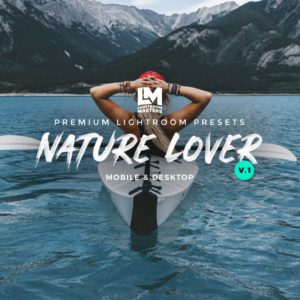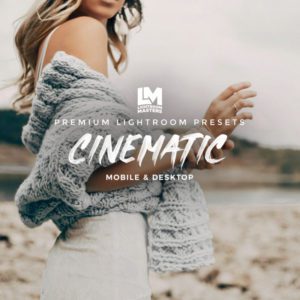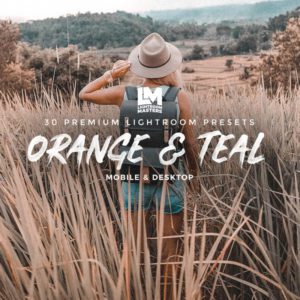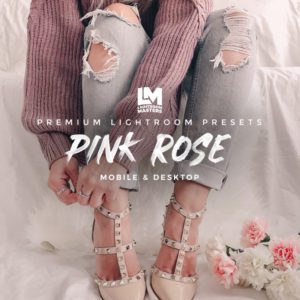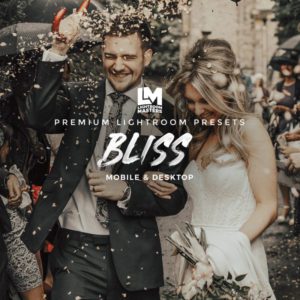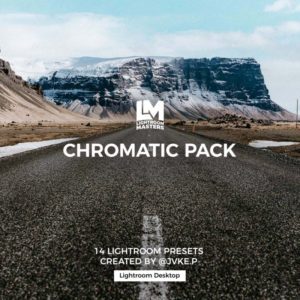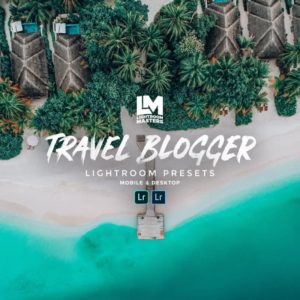Holly Andres is an American fine art and commercial photographer who has been creating dynamic and compelling images for over a decade. She started out shooting mostly fine art photography, but gradually branched into editorial assignments with the New York Times Magazine and many others. She continues to evolve and expand her art. For her fine art work, she is represented by the Robert Mann Gallery (New York City), Robert Koch Gallery (San Francisco), Jackson Fine Art (Atlanta), and Charles A. Harman Fine Art (Portland). For commercial assignments she is represented by Hello Artists.
![]()
![]()
Ken Weingart: When did you first think of becoming a photographer?
Holly Andres: My undergraduate degree is in painting and drawing. It wasn’t until after graduate school, when I was studying cinema and became intrigued by the potential of freezing a narrative as a single frame, that I discovered how photography could best aestheticize my concepts. I am fascinated by photography’s legacy to be perceived as an agent of truth, and recognize this as a powerful tool that is not inherent in the more traditional art forms.
![]()
![]()
Do you create personal work often?
I am consistently developing personal work, and fortunately through the representation of my galleries, I am always preparing work for future exhibitions. I find that there is a strong symbiotic relationship, one that is constantly evolving, between my commercial/editorial and personal work.
![]()
![]()
How did the idea of The Fallen Fawn come to you, and what were you trying to say?
The catalyst of this story is based on my two older sisters, who as adolescent girls discovered a woman’s lost or abandoned suitcase near the river behind our house. Knowing it was a valuable treasure, they took it home, hid it under their bed, and when they could, often during the night, secretly dressed up in this “mystery woman’s” belongings. They dressed up in her clothes, wrapped their hair in her curlers and wore her lipstick. By the end of the summer, the suitcase and all of its contents were likely absorbed by the abyss of our toy room and costume closet.
![]()
![]()
When they told me this story a few years ago, we found ourselves asking, “Who was that woman? What was her suitcase doing down at the river’s edge? Why did it not occur to them to take it to an adult instead of stashing it away?” Long after our conversation, I found myself still thinking about this woman, and the possibility that my two sisters, (two curious and naive girls) could have unearthed a treasure trove containing a sinister secret. This story has all the narrative motifs that most interest me, and so I set out to make a body of work inspired by it.
The Fallen Fawn is sequenced in such a way to illustrate the two parallel narratives of the sisters discovering the suitcase and the subsequent consequences of harboring this secret. Additionally, the implicit tale of the woman, dubbed “The Fallen Fawn,” which is revealed through her deserted belongings. I chose to depict the woman through her personal objects, thinking of them as clues strewn throughout the woods.
![]()
![]()
What kind of assignments in editorial and advertising do you like the most?
When I made the transition into the commercial sphere, I decided that I had to find a way to make it as fulfilling and meaningful as making art. I entered the commercial world with a relatively strong and varied portfolio of personal work — work that was not made under the influence of commercial application, and this is the work that has garnered the most attention of photo editors, art directors and art buyers.
I feel most excited when I am approached by a client who is familiar with my artistic process and aesthetic, and who is interested in engaging in a collaborative endeavor. I love shooting editorial because it gives me the opportunity to meet people who have compelling stories in places where I may never have had the opportunity to travel to.
My favorite editorial assignments are those that allow enough time for research, conceptualizing, and crafting a beautiful sequence of images, ideally created over the course of a few days. Conversely, I also love the challenge of walking into a space sight unseen, and being forced to listen to my intuition, make decisions quickly, and to try to make a dynamic photograph in a very short period of time.
![]()
![]()
Do you have a method for gaining new editorial and advertising clients?
I am fortunate to have very good existing clients and I try to cultivate trusting and harmonious relationships with them so that they will continue to consider me for future work. Regarding new clients, I’m repped by the photo agency Hello Artists, and in the company of a roster of great talent, my work is constantly being exposed to potential commercial collaborators. I also continue to invest in my own fine art endeavors, and find that when these arenas intersect, it results in the most exciting commercial opportunities. Additionally, I accept many speaking invitations and try to have an active and current online presence by maintaining my website, blog, and other social media threads.
![]()
![]()
At what point in your career did you start concentrating on fine art?
I have only been shooting commercially for a few years. My background and most of my career since graduate school has been in the fine art realm with representation from galleries in New York, Atlanta, San Francisco and Portland, where I now live. I had been trying to build a strong foundation in the fine art realm while teaching photography at the college level for several years, when I decided to see if my own approach might have some commercial application.
In January of 2012, I had a solo show at the Robert Mann Gallery in New York and assembled a portfolio of my existing work with hopes of setting up meetings with various photo editors and art directors. I can recall telling people, during my opening, that I was meeting with Kathy Ryan and The New York Times Magazine, and everyone said, “Whoa, how did you get a meeting with her?!” And so I started to get pretty nervous about it. I honestly didn’t realize how legendary she is in the editorial world.
The day of the meeting she had to reschedule, and quite frankly I felt relieved. She asked me to leave my portfolio at the front desk and within a month I was back in NY for my first editorial assignment — a week-long project shooting portraits of bungalow dwellers in Far Rockaway Beach. It was wonderful.
![]()
![]()
Is there any magazine or advertising clients you have not worked with that you would like to?
The Atlantic, Harpers Bazaar and Vanity Fair are all magazines that seem to have a lot of creative license, and I would be thrilled to collaborate with any of them. Regarding advertising clients, I’m really interested in the sensation of viral animal videos, and have become pretty obsessed with watching them myself. Obviously advertising entities are aware of the phenomenon, which has resulted in some very clever and touching campaigns. I would love to work on a project that reminds us of these incredibly loving bonds that animals can have with humans and each other.
![]()
![]()
Who are some of you favorite photographers past or present?
The realm of constructed narrative photography has certainly influenced me, where artists such as Jeff Wall, Gregory Crewdson and Cindy Sherman are the pioneers. The mise en scenes of many cinema sources continue to inspire me, including Alfred Hitchcocks’ work, and several 1970s horror films such as “Rosemary’s Baby,” “The Shining,” and “Carrie,” all of which have strong female characters who were deeply betrayed, but reasserted their strengths by the films’ end.
I also feel a strong connection to the work of many mid-century female surrealists, particularly because of their interests in psychoanalysis and their metaphoric depictions of fears, desires and impulses. Much of their work is autobiographical and employs symbolic objects and, unlike the desolate dreamscapes of their male counterparts, often resides within domestic spaces. I love the work of Dorothea Tanning, her 1943 painting; Eine Kleine Nachtmusik (A Little Night Music) is particularly inspiring. It depicts a beautiful painting of two young girls in a hallway of sanguine carpet confronted by an ominous giant sunflower, its torn stem reaching out like tentacles.
![]()
![]()
As with much of her work, the image is simultaneously whimsical and nightmarish. Similar qualities can be found in the work of Leonora Carrington and Remedios Varo. I’ve had a long-time love affair with the work of Maya Deren. Her 1943, experimental avant garde film, Meshes of the Afternoon, is a personal favorite. I recall being immediately enchanted when I was first exposed to it in a college film class. Its use of symbolic and familiar iconography, such as skeleton keys, unlocked doors, and mirrors have been a source of inspiration.
![]()
![]()
What cameras and lighting gear did you start with and what are you currently using?
While in graduate school, I met a photographer, who later became my husband. He taught me most everything I know about photography, technically. He was very instrumental in assisting me with my earlier work, Stories from a Short Street and Sparrow Lane, which were shot on a Sinar 4×5” view camera. Setting up the lights and dialing in the exposure was an extensive process – there wasn’t much room for experimentation – and so I exploited this limitation in the work.
The hyper-staged quality of Sparrow Lane, for example, is part of the artifice of working with a large format 4×5” camera. Now I almost exclusively shoot with a Canon 5D Mark III, which allows for more spontaneity. I still embark on my shoots with a consciously prepared vision, consisting of a constructed environment, cinematic lighting and deliberate costuming — but now try to couple it with an attempt to capture natural uncertainty. I am finding that the counterbalancing of choreographed structure with the unpredictable response of the subjects’ “performance” can govern the most compelling results.
![]()
![]()
Some might describe your portraits as highly stylized, cinematic, and flamboyant. Is this a good characterization?
Yes, I think so. My work is very much in dialogue with cinema, and even when I’m asked to shoot an editorial portrait, I try to depict my subjects as though they are protagonists within a larger narrative. When I gaze through the camera I try to think like a painter, though, and consider every aspect of the composition – the colors and textures of the fabrics, the value contrasts of the lighting, the position of the objects and characters, and the dynamic between the figure and ground.
![]()
![]()
In your series Summer of the Hornets and Stories from a Short Street, how did you find your subjects? Do you always have a crew for lighting and grip?
The family in Summer of the Hornets is my older sister, her husband and two daughters. I decided to portray her family as the characters in the series because, as with most of my personal work, this story is loosely based on a real-life account. In this case, my sister was horribly attacked when a hornet’s nest was disrupted in the woods behind our house. She was just a seven-year-old girl, frozen with fear, and stung over one hundred times.
Stories from a Short Street was made shortly after I finished graduate school, and since I didn’t know many children then, I used Craig’s list to solicit subjects. Mother (primarily) emailed their children’s’ head shots, which I used to cast the most believable, and cohesive family. The photo “Fiona I”, was my first image of that series, and at the time of the shoot the children were essentially strangers to me. I can’t believe it worked out as well as it did.
I always work with at least one assistant on every project. If I’m shooting at an unknown location, for example, the first few moments of walking into a space requires a lot of concentration and creative energy. If I have an assistant who can help with the gear, my mind is freed up to think more clearly.
In my personal work I spend a lot of time working independently. Preparing the space can be a rather laborious endeavor that typically takes a few days to install and light before the subjects even arrive. In my earlier series, Stories from a Short Streetor Sparrow Lane, for example, I produced about one photograph a month. My most recent series, The Fallen Fawn and Summer of the Hornets, was approached more like the commercial shoots I’ve recently worked on. I rented a house I had discovered when I attended an estate sale near my home. During the five days I had access to the house, I devoted two days to cleaning and propping the space, two days to shooting and one day to pack out. I hired three photo assistants and one PA who helped with logistics and wardrobe. In the end, we worked really fast on a pretty scrappy budget.
![]()
![]()
What print sizes did you generally choose and why?
My print sizes were recommended by my first gallery, and they’ve remained consistent at 20x 30” (editions of 12 with 2 APs) and 28×42” or 40×50”(editions of 3 with 2 APs). For the sake of my collectors and the art market, I can’t deviate from these sizes.
![]()
![]()
Do you do you own scanning and printing?
No. I use the fine art lab Pushdot Studio in Portland, OR who facilities my scanning and printing. I work closely with them, often making rounds of test prints, finessing the color and exposure until I’m satisfied with a final print.
![]()
![]()
Is large format worth the effort?
Sure in some instances. Sometimes the process of using a large format camera and the extra effort it requires, can be an interesting conceptual layer. For example, I recently read about the photographer Matthew Turley and how he was able to convince a ski magazine to allow him to shoot the assignment on an 8×10 camera. The thought of shooting extreme sports photography on a large format camera is so non-conventional that it’s downright crazy. The results are hauntingly beautiful.
![]()
![]()
For your commercial work, how important is your website? Do you bother making a hard copy portfolio?
I think a good website is really important, but because I constantly want to be working on something new, I feel as though I’m always endlessly behind on getting mine updated. I do have a hard copy portfolio, with beautiful large -scale prints, but most clients and collectors, are satisfied with seeing work online.
![]()
![]()
Is it hard changing gears from commercial work to fine art?
Yes and no. Fortunately, most of the commercial work that I get, stimulates my creativity in such a way that I feel as though I’m making artwork — as though I’m employing the same mental muscles. Shooting commercial work more regularly has sharpened the way that I see, and I’ve learned to photograph more efficiently. However, in these last few years, I have found maintaining my fine art practice to be difficult. In the past, when I transitioned between teaching and making art, the experiences felt so dramatically different that I had urgency to make it work. Whereas, in these last few years I’ve been shooting so much and waiting for things to slow down enough to embark on a new fine art series. Ultimately, the pressures of an upcoming show allowed me to take a few months off in which I turned down assignments so I could create The Fallen Fawn and The Summer of the Hornets.
![]()
![]()
How did your film, While the Trees Sleep come about? Have you thought about moving more into feature film or commercials?
While the Trees Sleep was as actually written and directed by my dear friend Emilie Sabath. I was the set photographer during its filming in Columbus Missouri in 2011. You can find a trailer here, but I’m not sure when the final film will be released.
I have made some short films and while motion film/video certainly has the potential to stimulate more sensations than a static photograph – through cutting, movement, score, etc. – there’s something really enchanting and inviting about a still image, that the only noise you have to contend with is your own beating heart. At the moment, I’m so in love with photography — and feel like I still have so much to learn— that making a film for personal work doesn’t interest me. It’s just not the way that I want to tell my own stories. I can see how directing a commercial could be really interesting and satisfying though.
![]()
![]()
What do you consider the most important breaks in your career and why?
Okay, this is an interesting question to reflect on because it reminds me how tangential both the fine art and the editorial/commercial world are.
My first solo show at Robert Mann Gallery in New York was a pinnacle. Being represented by an established New York gallery certainly paved the way for more exposure, which resulted in subsequent exhibitions and critical reviews. Sparrow Lane’s review in Art in America, for example, marked a seminal moment.
My first editorial assignment for the New York Times Magazine, which I previously mentioned, was a pivotal transition from the fine art realm, and I just feel honored to continually collaborate with the photo editors there. Establishing representation through Hello Artists, my commercial agent, has, of course, exposed my work to commercial collaborators who probably would not have had access to it otherwise. Looking back, I am continually reminded of what an honor it is to be a working photographer and am so grateful for all of the support that has allowed me to realize this dream.
![]()
![]()
How is living in Portland?
Portland was the perfect place with a supportive community for a young aspiring artist to move to 13 years ago. It is rapidly becoming a different city, however. With increasingly more development and an influx of residents, the cost of living is increasing to the extent that it’s less feasible to live a creative-focused and frugal lifestyle. Nonetheless, it’s a great little city with an active art scene; it’s my home now, and I must admit I love it here.
![]()
![]()
Most people grow up with one or two siblings. You have nine. What is that like?
Well, it’s all that I know. It didn’t seem that unique at the time, though as I’ve gotten older I increasingly recognize what an unusual experience it was.
I grew up in western Montana on a small farm, the youngest daughter of 10 children. My older siblings voted to name me Holly; born just two days before Christmas, my mom said I was the best gift they ever received. There are five boys and five girls and since my parents were politically conservative Catholics, we seemed to adopt rather traditional gender roles. Money was pretty scarce, and we didn’t have a lot of toys or access to extra-curricular activities, so we entertained ourselves by running wild in the woods behind our house, building forts and swimming in the river.
All my siblings are rather artistic, most of who went into academia, and I am the only one who has pursued art as a lifestyle and profession. At least once a year we have an ever-evolving family reunion in Missoula, Montana where we were raised. We take over a wing of a local hotel and my sister-in-law is the principle of an elementary school where we prepare meals in the lunchroom cafeteria while the 25 grandkids go crazy in the gymnasium. It is a visual buffet always experienced with my camera in hand.
![]()
![]()
![]()
![]()
You can find more of Andres’ work on her website.
About the author: Ken Weingart is a photographer based in Los Angeles and New York. He started out as an assistant for a number of renowned photographers, he he has since become an award-winning photographer himself with work that has been widely published across the world. You can see his work on his website and read his writing on his blog. This interview was also published here. See the blog and website for more Ken Weingart Interviews and Reviews.



